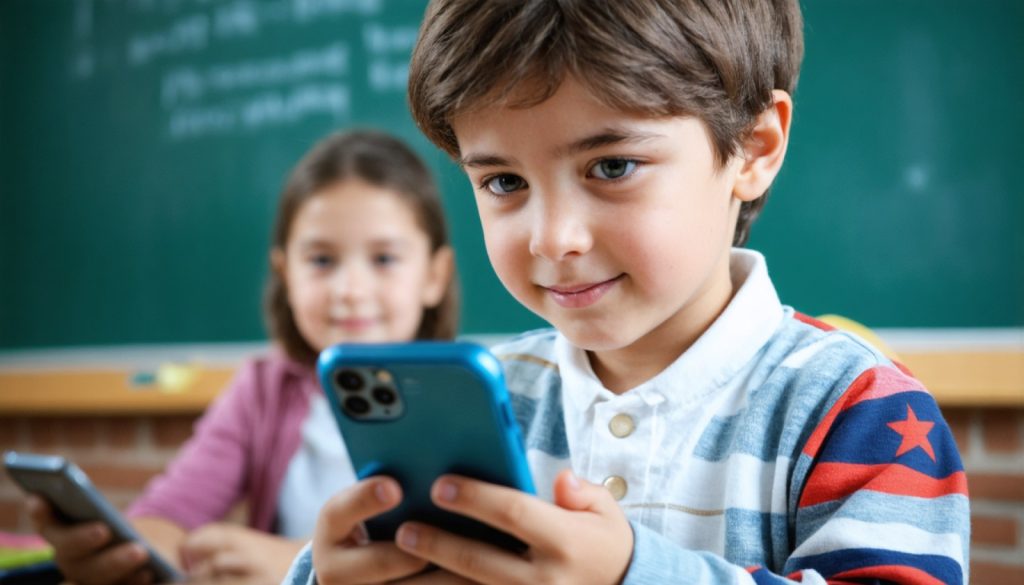
- Cellphones have become instrumental in modern education, offering instant access to a vast array of knowledge resources.
- These devices enhance student engagement with diverse learning modalities, helping to grasp complex concepts.
- Education has been democratized, allowing students to learn at their own pace, styles, and beyond traditional classrooms.
- Cellphones also provide an important safety function, keeping students connected to family for peace of mind.
- Responsible usage is key; educators and parents must guide students to balance digital and traditional learning methods.
- Overall, cellphones empower students as educational tools while promoting safety, requiring evolving perspectives on technology in learning.
In today’s rapidly evolving educational landscape, the ubiquitous cellphone has emerged as a powerful ally for learners of all ages. Far from being a distraction, these pocket-sized devices have become gateways to a universe of knowledge and resources, transforming the way students engage with their studies.
Picture a high school student, nestled in the corner of a bustling library. With a single tap on a glossy screen, she unlocks access to a myriad of academic journals, video tutorials, and interactive simulations. This instantaneous connectivity not only amplifies her thirst for knowledge but also enhances her ability to grasp complex concepts through diverse learning modalities.
Mobile phones have democratized education. Students from varied backgrounds can now learn beyond the traditional classroom walls, exploring subjects at their own pace and style. Whether it’s mastering a new language through engaging apps or demystifying algebraic equations with the help of online guides, the learning journey is no longer confined to textbooks or school hours.
Moreover, in a world where safety is paramount, cellphones serve a dual role. Parents gain peace of mind knowing they can reach their children at any moment, bridging the gap between being connected and being safe. The very presence of a cellphone establishes a safety net, ensuring that help is just a call or text away.
However, the true potential of cellphones in education is unlocked only when used wisely. Educators and parents are now tasked with guiding students to leverage these tools responsibly, striking a balance between on-screen engagement and traditional learning methods.
The takeaway? Cellphones in the educational sphere are more than mere communication devices. When harnessed effectively, they become instruments of empowerment, broadening access to educational resources while fostering an environment of safety and assurance for families. As technology continues to evolve, so too must our perspectives on its place in learning, ensuring that every swipe and tap brings students one step closer to knowledge and growth.
Unlocking the Educational Power of Cellphones: More Than Just a Gadget
Introduction
In today’s fast-paced educational environment, cellphones have revolutionized how students interact with learning materials. They are no longer irrelevant distractions but instead serve as essential tools facilitating personalized and accessible education. Here, we explore the multifaceted role of cellphones in education, providing additional facts and insights that the original discussion might have overlooked.
The Role of Cellphones in Modern Education
1. Enhanced Learning Opportunities Through Apps
Mobile apps such as Duolingo and Khan Academy have transformed language learning and general education, offering interactive, self-paced lessons. According to a study published in Educational Technology & Society, these apps improve student engagement and supplement traditional teaching methods effectively.
2. Real-Time Access to Information
Students are no longer limited to library hours or classroom sessions. Services like Google Scholar and JSTOR grant instant access to academic materials 24/7. As per a report from Pew Research Center, 73% of adolescents rely on their phones for homework assignments.
3. Communication and Safety
Beyond education, cellphones ensure constant connectivity, providing peace of mind for parents and ensuring that students can contact emergency services if needed. This constant link adds a layer of security in uncertain times.
Overcoming Potential Limitations
While cellphones bring numerous advantages, challenges such as distraction and information overload can arise. Here are some strategies to maximize benefits and minimize downsides:
– Utilize Focus and Study Apps: Applications like Forest encourage users to focus by setting timers and allocating breaks, reducing time spent on distractions.
– Establish Screen Time Policies: Educators and parents should discuss and implement guidelines detailing appropriate times and settings for phone use during studies.
Industry Trends and Future Implications
1. Increasing Integration with Augmented Reality
Augmented Reality (AR) features on smartphones can simulate complex concepts in subjects like biology and physics, offering students a hands-on learning experience.
2. Adoption of 5G Technology
The rollout of 5G technology promises to enhance streaming quality and download speeds for educational content, making remote and hybrid learning experiences smoother.
3. Collaboration with AI Tutors
AI-powered platforms like Squirrel AI are emerging, providing personalized tutoring that adapits to each student’s learning style and pace.
Actionable Tips for Educators and Students
– Leverage Educational Apps: Regularly explore and update the list of apps used to stay current with the latest educational technologies and platforms.
– Encourage Critical Thinking: While using technology, encourage students to critically evaluate the sources of information, fostering an environment of inquiry and skepticism towards unverified content.
– Balance Physical and Digital Learning: Incorporate both digital and hands-on activities to cater to diverse learning preferences.
Conclusion
Cellphones are undeniably powerful allies in modern education, but their potential is maximized when used wisely. By implementing practical strategies and staying informed about technological advancements, students and educators can harness the full spectrum of educational opportunities that mobile devices offer.
For more information, visit PEW Research Center.
By approaching cellphone use in education with strategic intent, they can be transformed into indispensable tools for empowerment, safety, and expansive learning opportunities.



